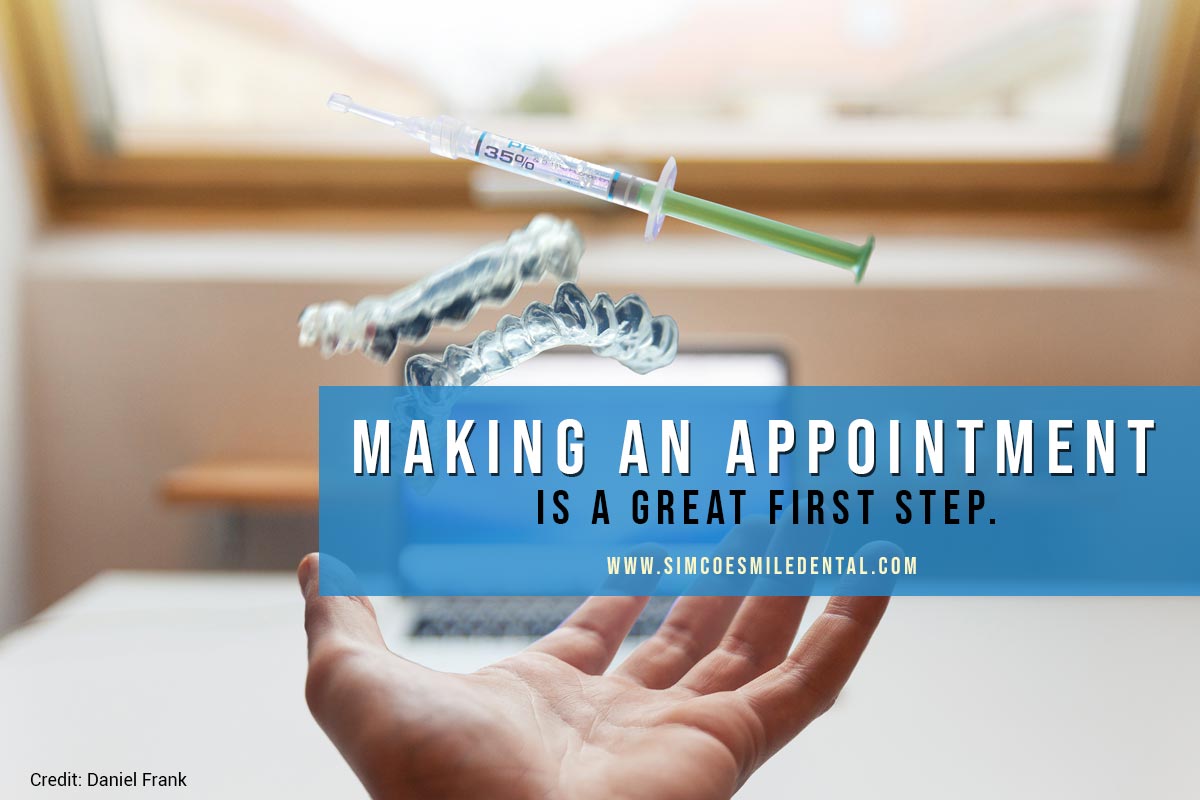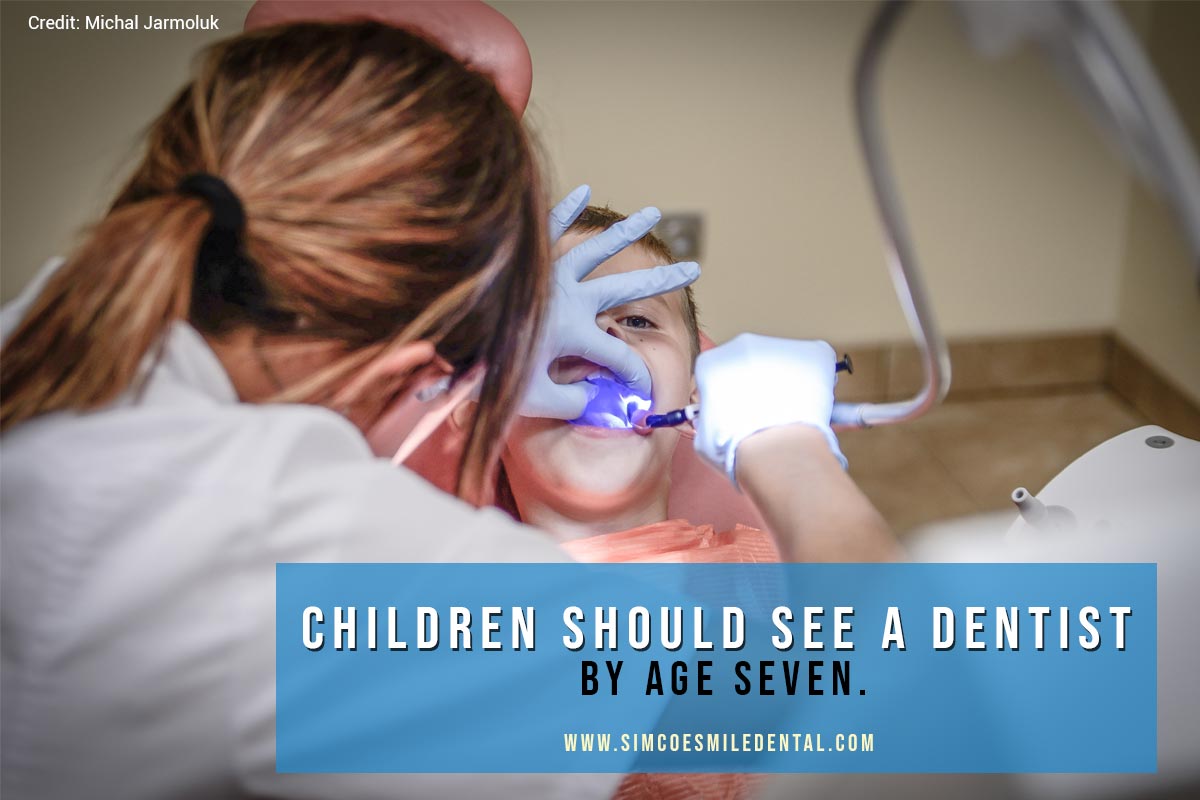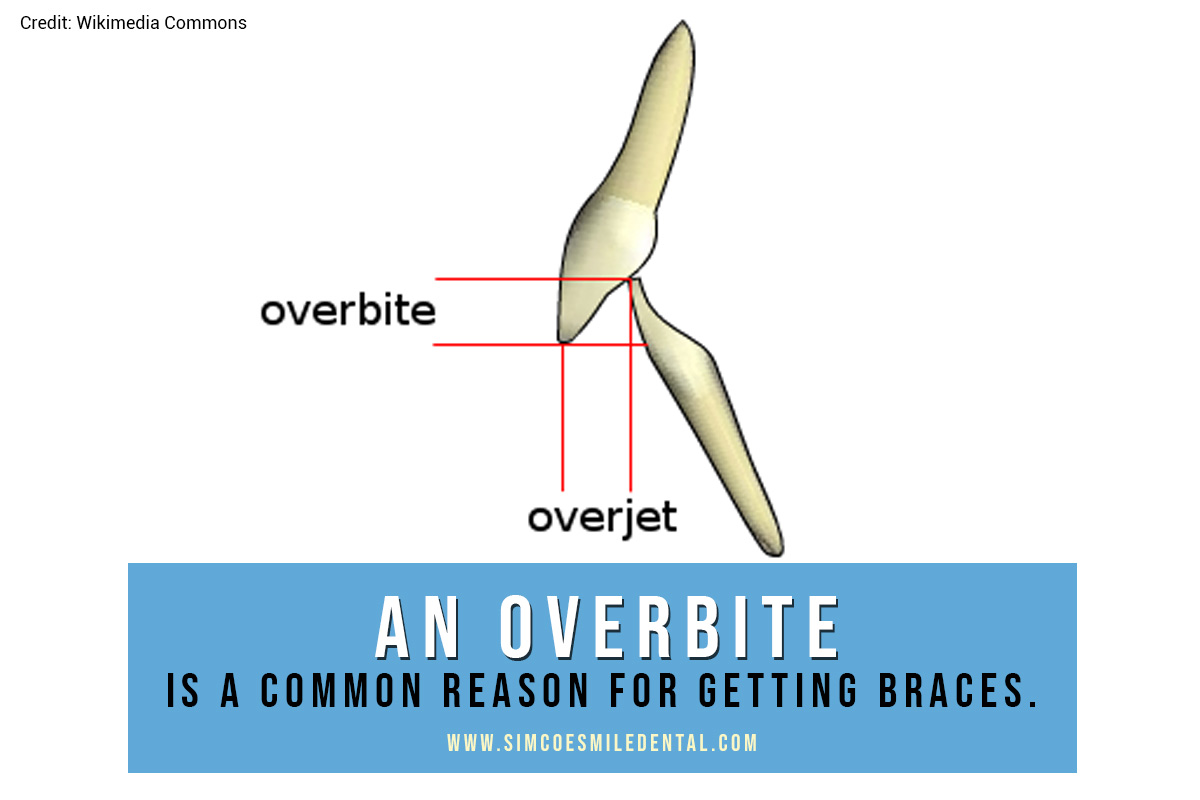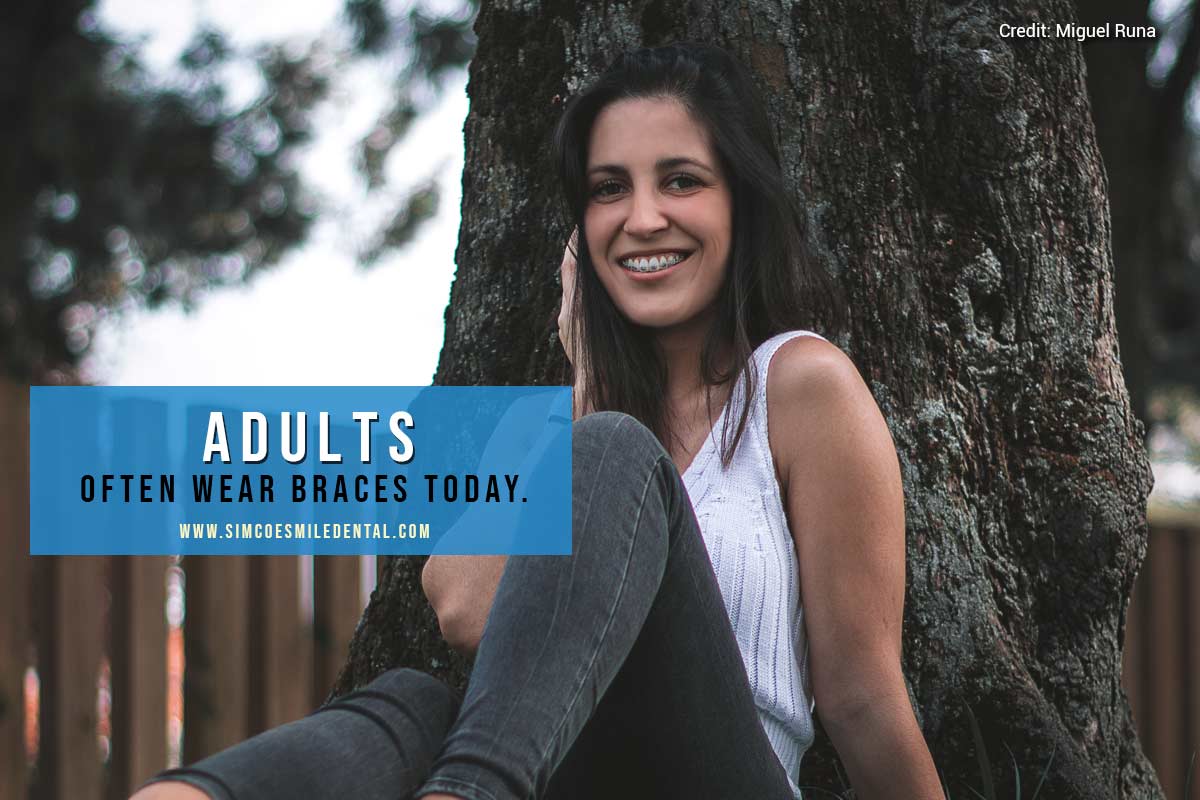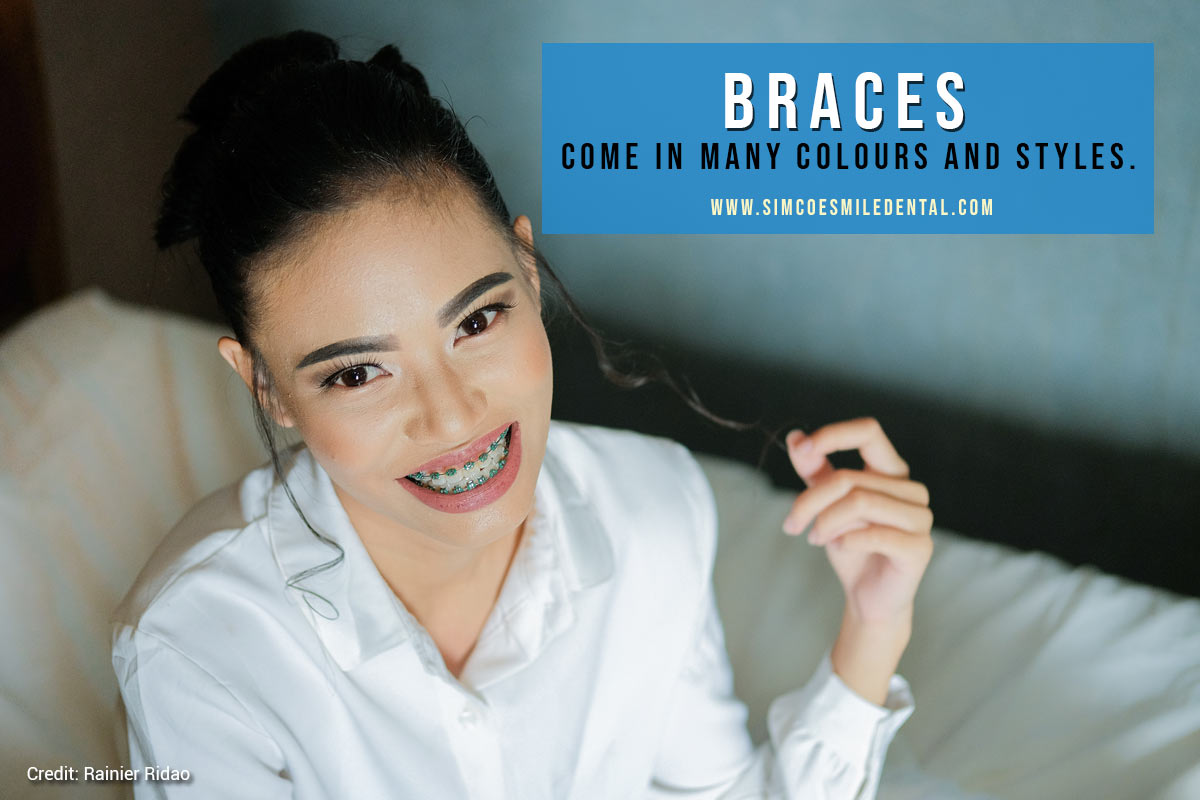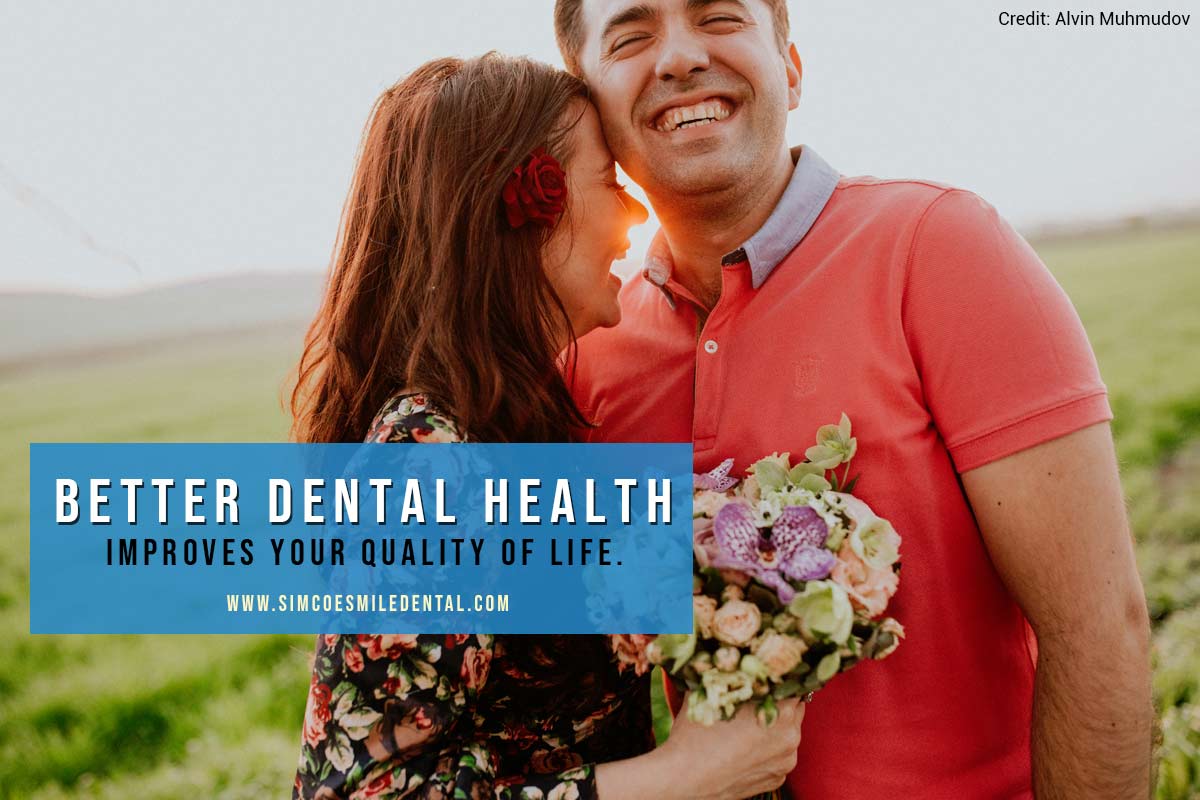The invention of braces started in the 1700s with a French physician named Pierre Fauchard. His original creation was a flat piece of metal connected to the wearer’s teeth by a thread. A mere 200 years later, dentist Edward Angle began using 14- and 18-karat gold to create brackets that would hold the teeth in line. Since then, braces have evolved to allow children and adults alike to address oral health issues comfortably.
Things may have been different when you were growing up. Dental care was often not considered an integral part of your overall health, and braces were just about straightening your smile. When they became more commonplace in the latter half of the 20th century, many people couldn’t afford them for their children, and insurance often didn’t cover them for adults.
Now we know that good dental health is an essential factor in your overall well being, and that having a properly aligned bite helps improve your life in many ways. Malocclusions — crooked, overcrowded, or overlapped teeth — need to be addressed to reduce wear on tooth enamel, allow for easier brushing & flossing, and prevent stress and cracking.
What does this mean for the average person in 2019? How do you know if you need braces?
Childhood Issues
Once children begin to lose their baby teeth, their mouths start to take on their adult forms. Some habits of childhood, like thumb sucking, can potentially affect the proper growth of teeth and can even alter the roof of the mouth. Another concern is when your child loses their baby teeth earlier than is usual. If this happens, their adult teeth may yet be underdeveloped and might take longer to grow in. This can result in future oral health concerns.
In all such cases, children should see a specialist for their oral health by age seven. Most kids won’t need treatment at this age, but early assessment allows your orthodontist to determine where things are at and create a long term plan for your child’s teeth.
Crooked or Crowded Teeth
No one’s teeth are perfect. If your teeth are crooked and pressing into each other, it can induce social embarrassment. However, avoiding embarrassment is not the primary benefit of orthodontics, although it is frequently the impetus for doing it. Crooked teeth, or a “snaggle tooth,” is caused by having too many teeth for the space in your jaw. Crowding throws off the alignment of your mouth, putting uneven stress on some teeth and wearing down the enamel on others. It can also make proper brushing and flossing very difficult. When you’re struggling to maintain good oral care, bacteria and plaque can build up on your teeth or in the gumline. This puts you at risk for tooth decay, gum disease, and other potentially harmful consequences.
Overbite vs Underbite
A misalignment due to an overbite or underbite is a common medical reason to get braces. An overbite is when your upper jaw overlaps the lower part of your jaw by more than 2mm. It can cause headaches, jaw pain, and possibly difficulty chewing food. An underbite is, naturally enough, the opposite issue where your lower jaw protrudes, covering your upper teeth. This can lead to jaw pain, inflammation, and arthritis, and is a leading cause of Temporomandibular Joint Syndrome (TMJ).
What is TMJ?
Temporomandibular Joint Syndrome, better known as “TMJ” is when a misalignment of the temporomandibular joint (the jaw joint right in front of your ears) causes tenderness or pain in the jaw, face, or ears. Here are seven indicators that you might be a potential sufferer:
-
-
- Pain in your jaw while eating or talking
- Difficulty with eating or chewing
- Waking up with pain under/behind your ears
- Clicking sound from your jaw while shifting it
- Do you breathe through your mouth regularly
- Grinding your teeth at night
- Waking up with headaches
-
Just as there are a variety of causes for TMJ, there are a variety of solutions; depending on what is causing the pain, braces may or may not be part of your optimal therapy. If you are experiencing these symptoms regularly, talk to your dentist to determine the cause, and to work out an effective solution to the issue before it causes further complications.
Adults Don’t Wear Braces – Or Do They?
Adults can also benefit from the results of orthodontics. Braces will bring back the natural alignment of your teeth and jaw, improving your quality of life. Improving the alignment of your teeth as an adult can still reduce enamel wear and muscle stress, ease cleaning, and postpone tooth loss.
What Kind Of Braces Should I Get?
There are several different types of orthodontic devices available for children and adults who are considering appliances; but they break down into a few primary categories.
- Traditional braces are metal brackets attached to your teeth, and use wires held in by rubber bands to gradually move teeth into alignment
- Ceramic braces are similar to traditional ones. However, they can be matched to your tooth colour and, with low profile wires, are much less casually noticeable
- Lingual braces are metal, but the brackets and wires are placed inside the mouth, on the tongue side of the teeth (hence the name)
Check with your dentist for available options to suit your needs.
What is Invisalign?
Invisalign braces are clear, plastic removable aligners. You wear them for approximately 22 hours a day, taking them out only to eat. A series of 18 to 30 custom-made mouth guards are created and replaced every two weeks. Advancements with the Invisalign technology allow for more complex cases to use Invisalign now than when they were first introduced in 1997. If you are considering it, perhaps you want to read about what to expect from Invisalign treatment.
Crooked teeth, overcrowding, too much space between your teeth, overbites, and underbites are all issues that require intervention to maximize your oral health. Whether your child is in need of braces, or you want to correct your own smile with your Invisalign dentist Oshawa, feel confident in taking that next step. Braces fix alignment, straighten teeth, adjust your bite, and promote good health.
If you’re in the Oshawa or Courtice area, call Simcoe Smile Dental. 96 Simcoe Street North, Oshawa Ontario L1G 4W2 (289) 312-1482 email: smile@simcoesmiledental.com.

